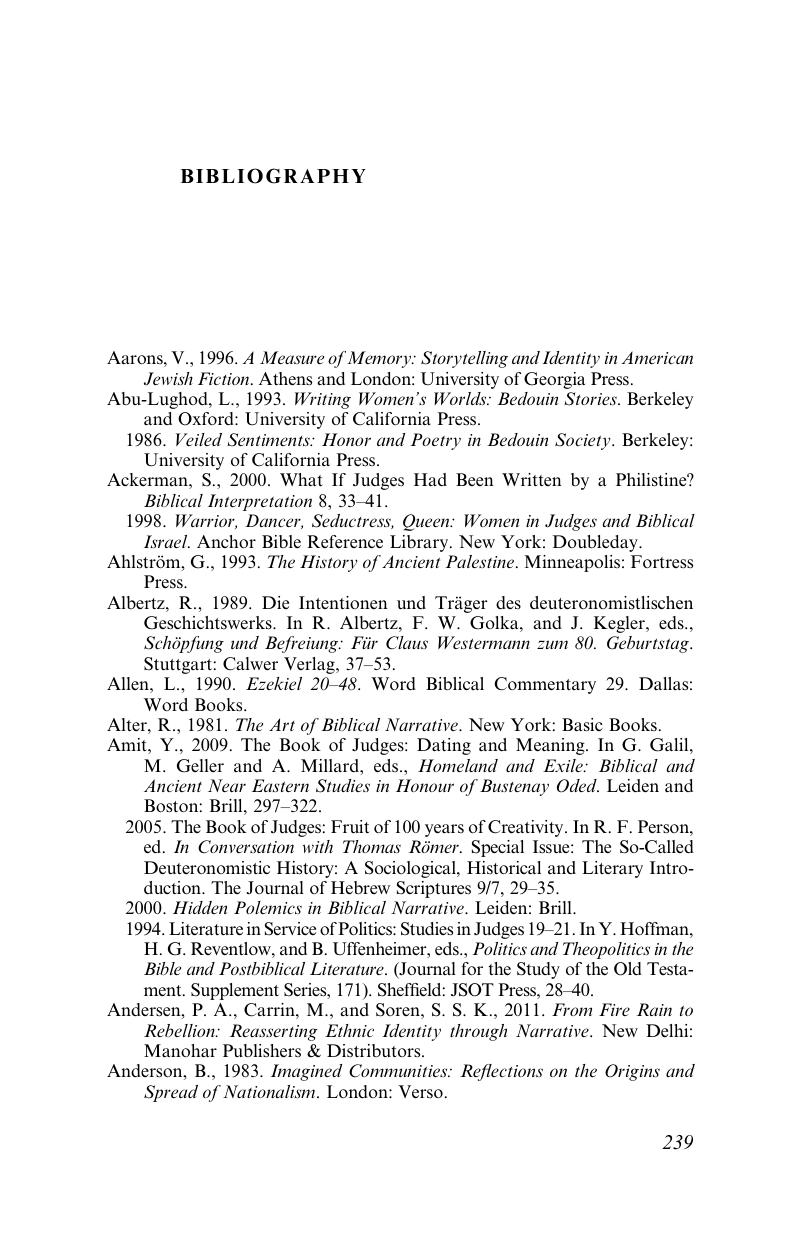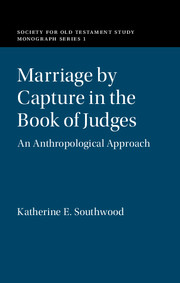Book contents
- Frontmatter
- Contents
- Preface
- 1 Methods, Considerations and Recent Approaches to Judges 21
- 2 Contextualised Outline of the Causes for and Consequences of Marriage by Capture
- 3 Virginity, Marriage and Rape in the Hebrew Bible
- 4 Judges 21 as an Example of Marriage by Capture in the Hebrew Bible
- 5 Marriage by Capture within an Ethnic Narrative: Judges 21 as a Social Critique of Superficial Unity in the Persian Period
- Conclusion
- Bibliography
- Author Index
- Thematic Index
- References
Bibliography
Published online by Cambridge University Press: 30 March 2017
- Frontmatter
- Contents
- Preface
- 1 Methods, Considerations and Recent Approaches to Judges 21
- 2 Contextualised Outline of the Causes for and Consequences of Marriage by Capture
- 3 Virginity, Marriage and Rape in the Hebrew Bible
- 4 Judges 21 as an Example of Marriage by Capture in the Hebrew Bible
- 5 Marriage by Capture within an Ethnic Narrative: Judges 21 as a Social Critique of Superficial Unity in the Persian Period
- Conclusion
- Bibliography
- Author Index
- Thematic Index
- References
Summary

- Type
- Chapter
- Information
- Marriage by Capture in the Book of JudgesAn Anthropological Approach, pp. 239 - 264Publisher: Cambridge University PressPrint publication year: 2017



